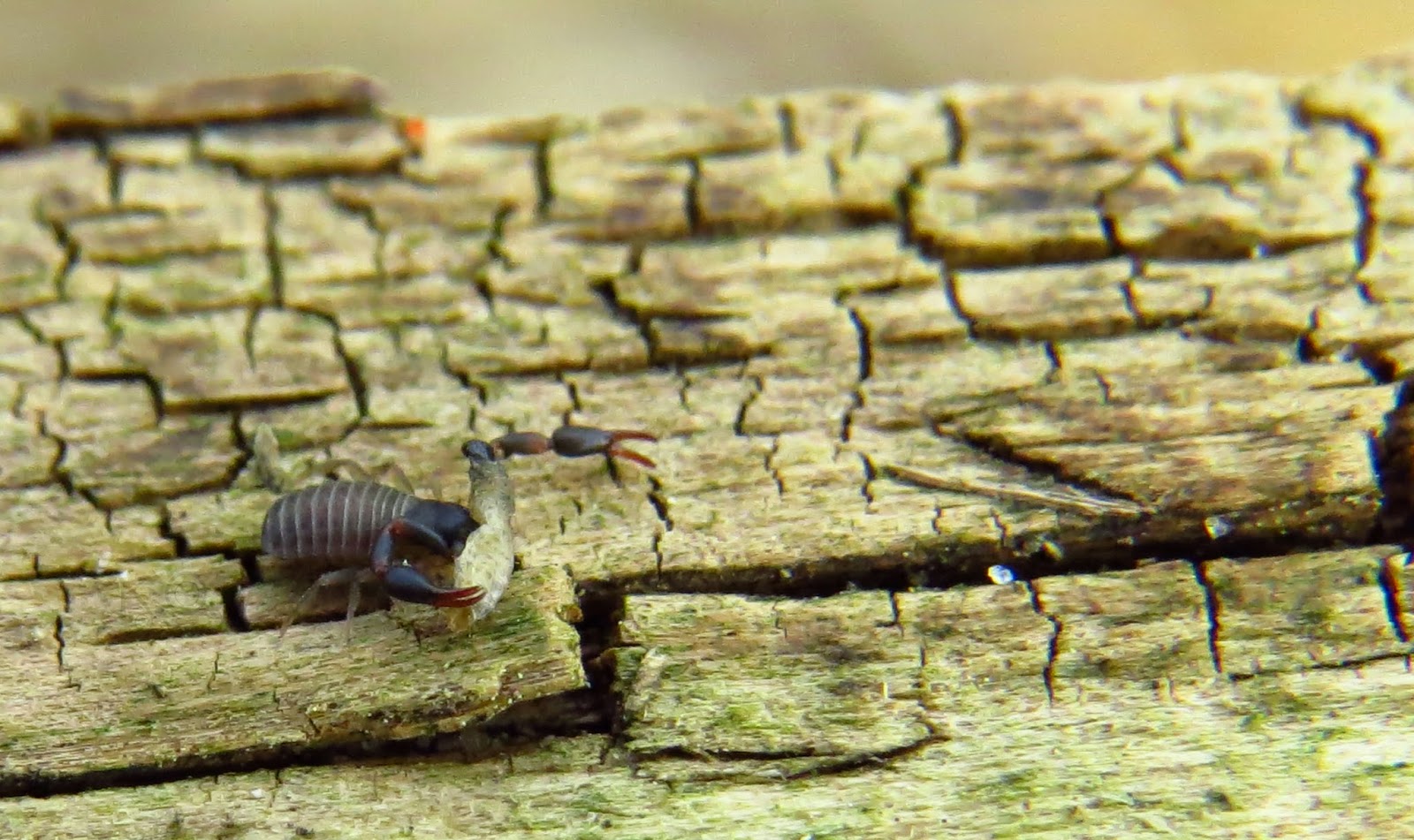The Best Arachnids Ever
My first blog entry is entirely about pseudoscorpiones. They are really tiny arachnids (at most a few millimetres)
and because of their size they are not so easily observed. However, having
found some in Morston Marshes and RSPB Titchwell reserve I had an idea to search for them in
other places. I asked the question: “Are they present around the entire Norfolk
coast and if so, how many different species are there?” (According to the
websites below there are 27 species recorded in the UK.) For now I can confirm
that there are two species of Pseudoscorpiones present at NWT Holme Dunes.
I wanted to determine what species they were so remembering
where I found them and referring to my photographs I searched online and found two
really good websites: http://www.jorgenlissner.dk/pseudoscorpions.aspx
and http://www.chelifer.com)
From the pictures and description given on the websites I identified my two finds as Common Chthonid (Chthonius
ischnocheles) and Marram Grass Chelifer (Dactylochelifer latrellei) but do please let me know if my identification is incorrect.
Common Chthonid (Chthonius
ischnocheles)
These pseudoscorpiones are very small (around 2 mm) and found in damp places,
usually on soggy, slightly rotting wood. Their pedipalps are reddish-pink in colour with
slim and long claws. The cephalothorax (‘head and body’) is olive green and the
opisthosoma (‘tail’) is striped reddish-brown. They have two additional ‘claws’
on their head and are covered all over with sparse but quite long bristles. They seem to have
two pairs of eyes on each side of their head (as seen on the photograph.)
Marram Grass Chelifer (Dactylochelifer
latrellei)
These pseudoscorpiones are slightly larger (around 3-3.5 mm) and are
found in dry places, mainly in dunes, under dry wooden debries. Their pedipalps
are dark reddish-brown with short and bulbous claws; cephalothorax is dark
reddish-brown; opisthosoma is distinctly grey and brown striped in appearance (in certain light looks velvety),
the whole body is covered in very short light hair. They seem to have one pair
of eyes on each side of the head just by the base of the pedipalps.
I observed both the species Marram Grass Chelifer and Common
Chthonid at NWT Holme Dunes on a few occasions:
(GIS Map courtesy of Norfolk County Council used to record own data, approximate locations)
I become quite fond of pseudoscorpiones and now think that they are
indeed the best arachnids ever. I was so pleased to find the first one (under a
short piece of plank in a field between Morston and Stiffkey, quite away
from any marram grass) because it reminded me of my childhood. We used to have
similar species sporadically appearing inside our house and called them Štírek
(Little Scorpion)
I will continue to keep an eye out for them and report back
with any new findings.
Now some more pictures (photographs and a short video clip from other North Norfolk locations included for reference):
Common Chthonid (Morston)
Common Chthonid (Holme NWT - pines)
Common Chthonid (Holme - NOA car park)
Marram Grass Chelifer (Titchwell)
Marram Grass Chelifer (Morston)
Marram Grass Chelifer: 'Hunting for caterpillars' (Titchwell)
Marram Grass Chelifer (Holme NWT - forestry)
Marram Grass Chelifer: 'Fight' (Titchwell)












Hi Karla - great post. I agree with your identifications. A third species (either Lamprochernes nodosus or L. chyzeri) can be found in the heaps of grass cuttings immediately north of the A149 road on the east side of Peddar's Way footpath. It may also be on the reserve.......
ReplyDelete